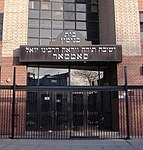Rockwood & Company shipping department fire

On May 12, 1919, a fire broke out in the shipping department of the Rockwood & Company chocolate factory complex on Flushing Avenue in Brooklyn. At around 1 am, materials and products stored on the second floor of the department are suspected to have caught fire by spontaneous combustion. The New York Fire Department were unable to save the building but prevented the spread of the fire to the rest of the plant. Firefighting water washed a mixture of molten chocolate and butter out onto neighbouring streets where it blocked storm drains and caused a flood sufficient to "float a rowboat for two blocks". Local children crowded to the site to taste the mixture. The fire was extinguished by around 11 am and caused damage in excess of $75,000 (equivalent to $1,172,217 in 2021).
Excerpt from the Wikipedia article Rockwood & Company shipping department fire (License: CC BY-SA 3.0, Authors, Images).Rockwood & Company shipping department fire
Washington Avenue, New York Brooklyn
Geographical coordinates (GPS) Address Nearby Places Show on map
Geographical coordinates (GPS)
| Latitude | Longitude |
|---|---|
| N 40.6975 ° | E -73.968055555556 ° |
Address
Washington Avenue 40
11205 New York, Brooklyn
New York, United States
Open on Google Maps








